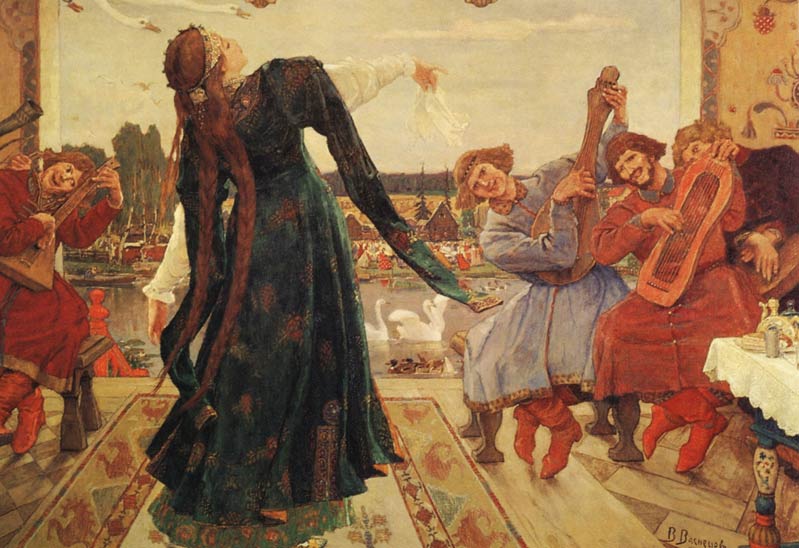Forgotten Rituals and Magical Practices in Ancient History
Over the centuries, historic texts have recorded a large number of rituals – magical or religious – some of which have been preserved in modified forms, while others remain only in obscure, old books. Yet others have been almost completely lost in the mists of time.
Rituals were usually designed to bring an individual something he was lacking, or to ease his day-to-day life. Native Americans, for example, are known for their rituals to call for rain, practiced during periods of drought. The Mayas and Aztecs practiced bloody rituals based on human sacrifice in order to appease the gods from the heavens and to gain abundance and prosperity. Voodoo priests carried out death-sending ceremonies under the patronage of Baron Samedi, a Loa (spirit) of Haitian voodoo. Everything related to death belonged to the domain of Baron Samedi who, as the god of death and resurrection, was able to shorten or to immediately end the life of the one upon whom he had been sent.

Aztec sacrifice rituals (public domain)
The Japanese had yin-yang priests called onmyouji, who practiced a vast number of magic rituals based on Feng Shui techniques borrowed from China. Scandinavians divined the future in runes, while the Romans sacrificed animals during ceremonies dedicated to the gods, and predicted the future according to the state of the organs of these animals. Thus, magic rituals have been grouped on domains such as divination, invocation of spirits, possession, necromancy and many others.

Sacrifice of a young boar in ancient Greece (tondo from an Attic red-figure cup, 510–500 BC, by the Epidromos Painter, collections of the Louvre). (public domain)
Thaumogenesis
As magic tries to offer man that which he cannot attain by natural means, it is not surprising that many ancient texts of magic try to propose solutions for the resurrection of loved ones who have passed away. There are many rituals which were believed to be able to bring the dead back to life. Still, even in magic, resurrecting the dead is seen as an unnatural act that can have serious consequences. Thus, not just resurrection techniques have filled the pages of numerous books of magic, but also the consequences of these rituals. Thaumogenesis is believed to be one such consequence.
Thaumogenesis refers to the process through which a demon is believed to be created by means of a resurrection technique. This means that when a resurrection spell is used, two holes are created and two spiritual entities may enter the world of the living, one of these entities being the spirit of the being that is to be resurrected and the second, an entity of demonic nature that is created in the process. In the case where there is exactly one hole that opens, residual demonic energy from the other dimension can cling on to the spiritual entity that is being summoned to cross over to the world of the living to be resurrected. When reaching the world of the living, the residual demonic energy can concentrate and result in the creation of a new demon.

Creation of a demon (buffy.wikia.com)
After the resurrection spell is complete, the two entities that have crossed over are said to be linked on the level of existence, such that if the resurrected individual dies, then the new demon also disappears. In addition, it was believed that the existence of the new demon was temporary, meaning that the demon would cease to exist unless it managed to become materialized or killed the resurrected individual in order to break the link. Since resurrection spells deal with changing the natural order of things by means of undoing death, then Thaumogenesis can be seen here as an extreme natural consequence or as a debt that is to be paid.
The Spirit Inseparably Linked to the Shadow
In the past, it was believed that the shadow of a living being was its soul or part of its soul. In many languages, the word for "shadow" also carries the meaning of "spirit". Thus, numerous practices and rituals have been developed in order to influence a being by means of its shadow. By acting magically on the shadow, one acts on the being in question. Everything that happens to a person's shadow is said to somehow be felt in the physical body. The shadow was seen as the soul of the person in its living manifestation and, when the shadow was not visible, it was believed that the soul had retreated inside the body to enter a temporary state of hibernation. When the shadow reappeared, it was believed that the soul came out of the body, gaining consistency.

Numerous rituals in the ancient past concern the shadow, once believed to be connected to the spirit. (Thomas Leuthard / Flickr)
It was once believed that the spirit could leave the body for limited periods of time without causing the death of the individual, but this separation was dangerous. If someone intervened magically, that person could capture the soul and without its return to the body, the person would die. Other sorcerers could choose to work on the shadow in order to influence a particular person. As the suggestion to perform a certain action comes from within, acting on the shadow could mean acting on the spirit inside and determining the individual to do what the sorcerer wanted him to do in the first place, while thinking it was his own initiative. Following the same principle, some African tribes believed that a man could be killed by throwing a spear at his shadow, and dreams are seen as the unclear memories of the nocturnal journeys of the spirit.
Featured image: A frog changes into a princess in the painting Tsarevna Frog ("The Frog Princess") by Viktor Vasnetsov (public domain)
By Valda Roric
References:
“Paranormal”, L.V.B. Publishing
Aurora Inoan – “The Book of Occult Sciences” – Volume 1
Rene Louis – “Dictionary of Misteries”

















